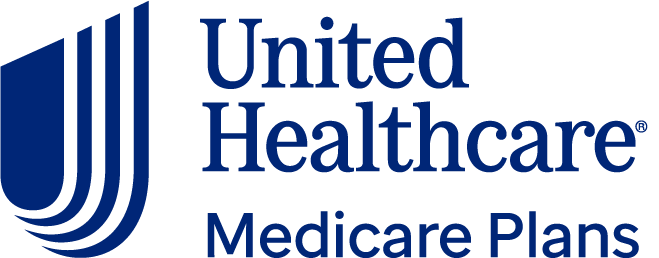Can You Afford Health Care in Retirement?
From maxing out an HSA to choosing the right Medicare coverage, here are some strategies to help you tackle retirement health care expenses.

Many, or all, of the products featured on this page are from our advertising partners who compensate us when you take certain actions on our website or click to take an action on their website. However, this does not influence our evaluations. Our opinions are our own. Here is a list of our partners and here's how we make money.
At age 65, some couples may need as much as $413,000 to cover health care costs in retirement, according to a January report from the Employee Benefit Research Institute. That’s an extreme case, representing two people with high prescription drug costs — but it’s not outside the realm of possibility.
“It’s one of the most difficult expenses to predict in retirement,” says Nancy Nawn, a certified financial planner in Cherry Hill, New Jersey.
Your costs will depend on your insurance choices, your health, your prescription drugs and your city. (Costs are higher in some places than others.) As you approach retirement, try these tactics to get a handle on future health care expenses.
Save to a health savings account
If you have a high-deductible health plan and access to a health savings account (HSA), max it out. The money you save is triple tax-advantaged: You pay no taxes on the money you save, the interest you earn or any withdrawals used for qualified health expenses.
“I think most people use them as they go, which is fine too,” says Ed Snyder, a CFP in Carmel, Indiana. “But I think there are even more benefits to using the investment account in those [and] letting that money be invested for many years, just like a retirement account.”
In 2024, you can save up to $4,150 for an individual health savings account and up to $8,300 for family coverage. If you’re 55 or older, you can contribute an extra $1,000. (Note: You can’t save to an HSA once you’re signed up for Medicare.)
Shopping for Medicare plans? We have you covered.

3.93
CMS Star Rating
from UnitedHealthcare

3.63
CMS Star Rating
Pick the right Medicare plan
Once you’re 65, advisors typically recommend selecting Original Medicare with Medicare Supplement Insurance, or Medigap. Since Medigap plans cover many out-of-pocket expenses of Medicare, this keeps your monthly health care costs predictable.
Many older adults are attracted to the $0 premiums of most Medicare Advantage plans, but using these private health plans means you may be limited to in-network doctors and hospitals. “I have seen many situations where people wind up needing to go see a provider who doesn’t take the coverage, and they pay the full bill themselves,” says Melinda Caughill, co-founder and CEO of 65 Incorporated, which offers guidance on Medicare.
Out-of-pocket maximums for Medicare Advantage plans also can be as high as $8,850 per year in 2024, and that doesn’t include your Medicare Part B (medical insurance) premiums. That said, if you can’t afford a Medigap plan, Medicare Advantage may be the better option. Without Medigap, Original Medicare has no out-of-pocket maximum.
Get help with tax planning
If your income exceeds a certain threshold, you will pay more each month for Medicare Part B and Medicare Part D prescription drug coverage (if you have it). This is where it helps to be strategic about your retirement income, making sure you have both pretax and post-tax accounts to pull from as needed. (Pulling from pretax accounts raises your income.)
“If you have saved a lot of money in tax-deferred vehicles, and you haven’t planned to do either Roth conversions or spend down that money, you could wind up having a much larger monthly Medicare premium than you think,” Nawn says.
Pay down your mortgage
If you’re 62 or older and have at least 50% equity in your home, you may have access to a reverse mortgage later if you really need it. This is a loan or line of credit on your assessed home value — and you don’t have to make payments. The loan is repaid when you move out or die.
Reverse mortgages once had a scary reputation, but today’s products are safer, Nawn says. “There was abuse many, many years ago,” she says. “It’s been cleaned up, and it’s a really great tool to have in your back pocket.”
Keep in mind that reverse mortgages require at least one borrower to live in the home, and they cost more than a traditional home mortgage over time. Work with an advisor who’s familiar with the product before you take the plunge.
Consider a HELOC
If you’re younger than 62 and you’re still working, a home equity line of credit (HELOC) can provide you with a stream of income to tap later if you need it. (It’s easier to qualify for a HELOC while you’re still getting a paycheck.)
The catch: Unlike a reverse mortgage, a HELOC requires you to make payments. “At some point in the future, you’re going to have to pay it back,” Nawn says.
Keep things in perspective
In the end, don’t lose too much sleep over the big figures. Consider how intimidating it would be if experts also told you how much you should save to cover 30 years of food or utility bills in retirement. With the right planning, health care costs can be manageable.
“A reasonable cost is about $6,000 a year for an individual, and if you price that out on a monthly basis, it’s $500 a month,” says Dick Power, a CFP in Walpole, Massachusetts. “That $500 a month typically includes your insurance coverage and your copays.”
This article was written by NerdWallet and was originally published by The Associated Press.

